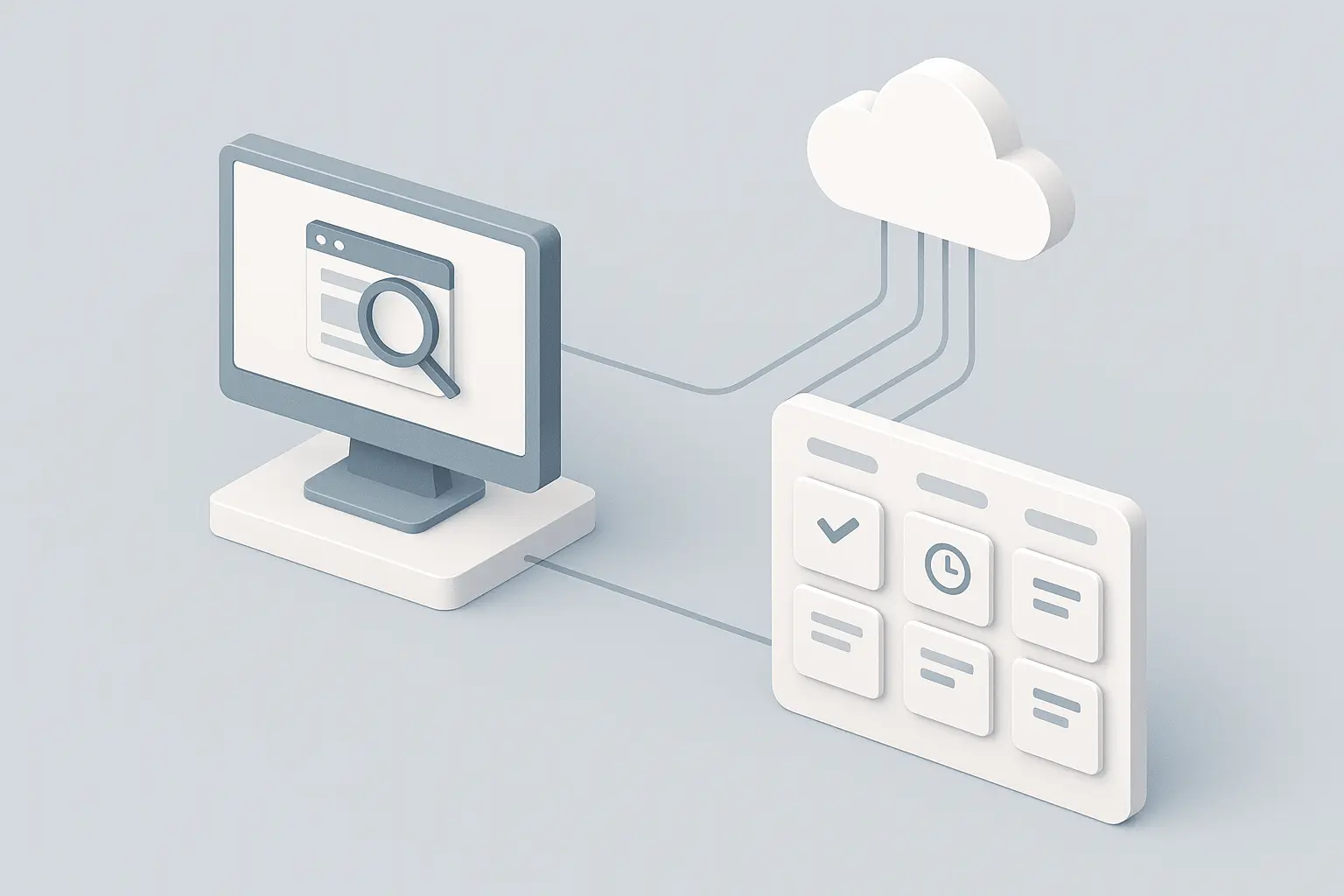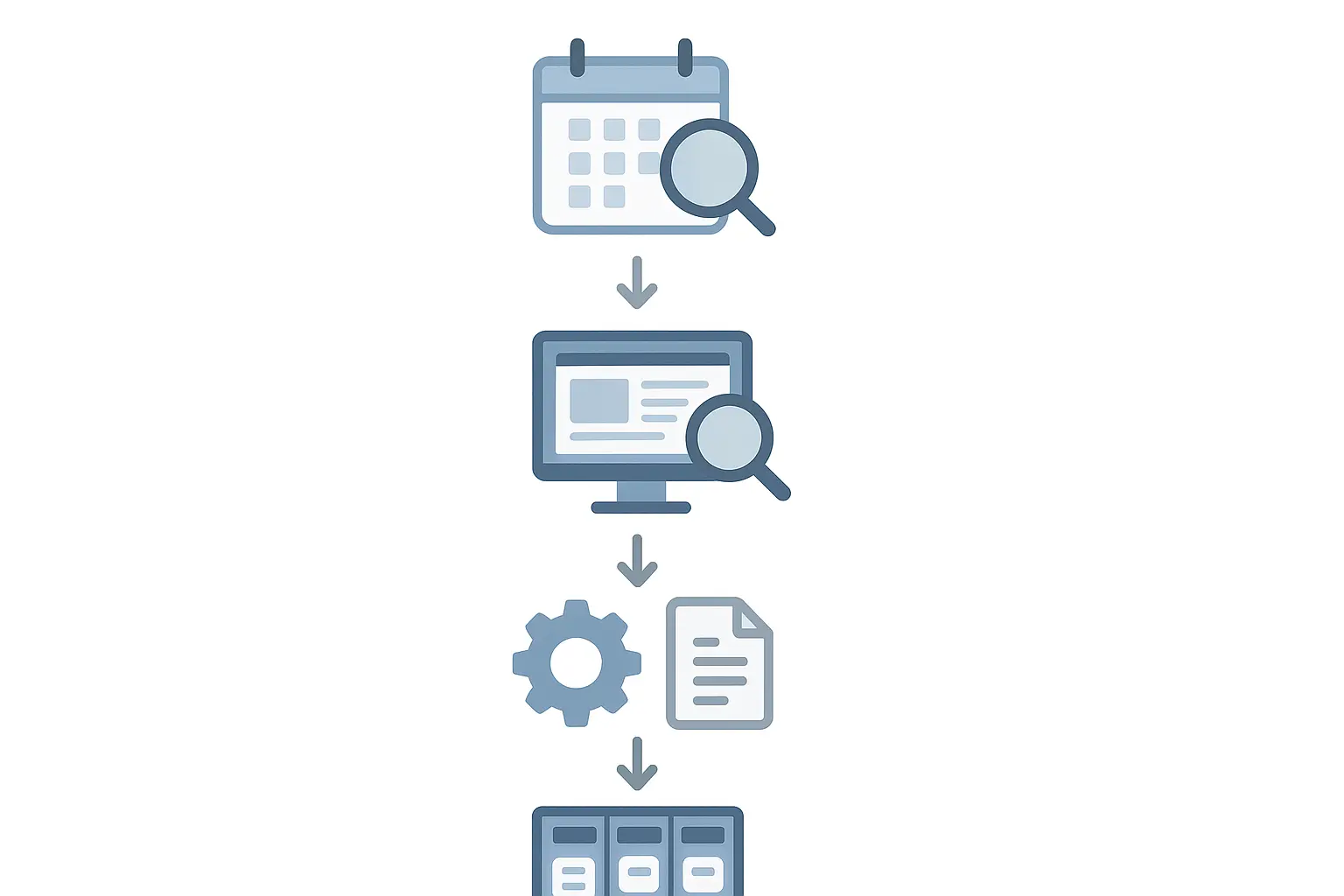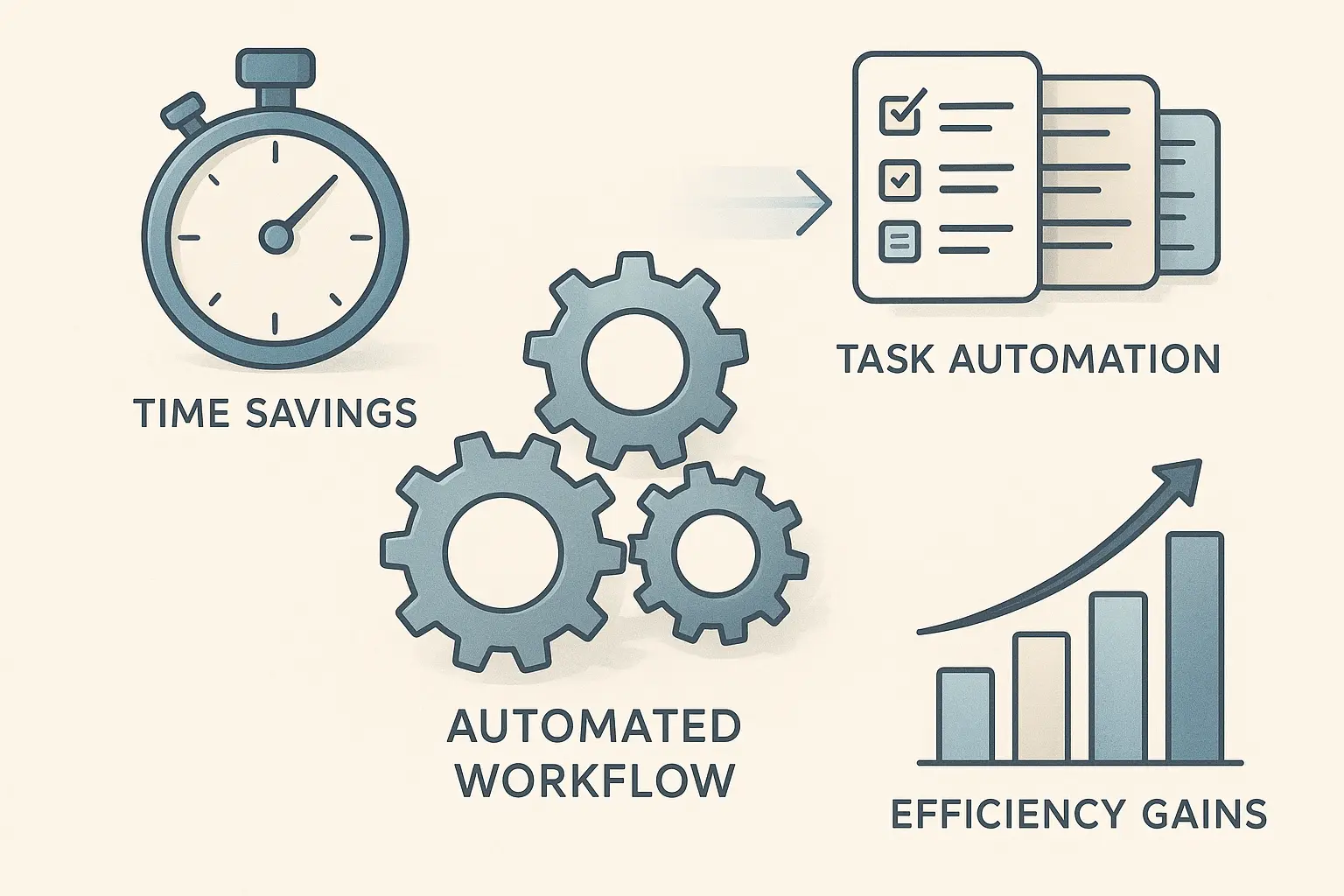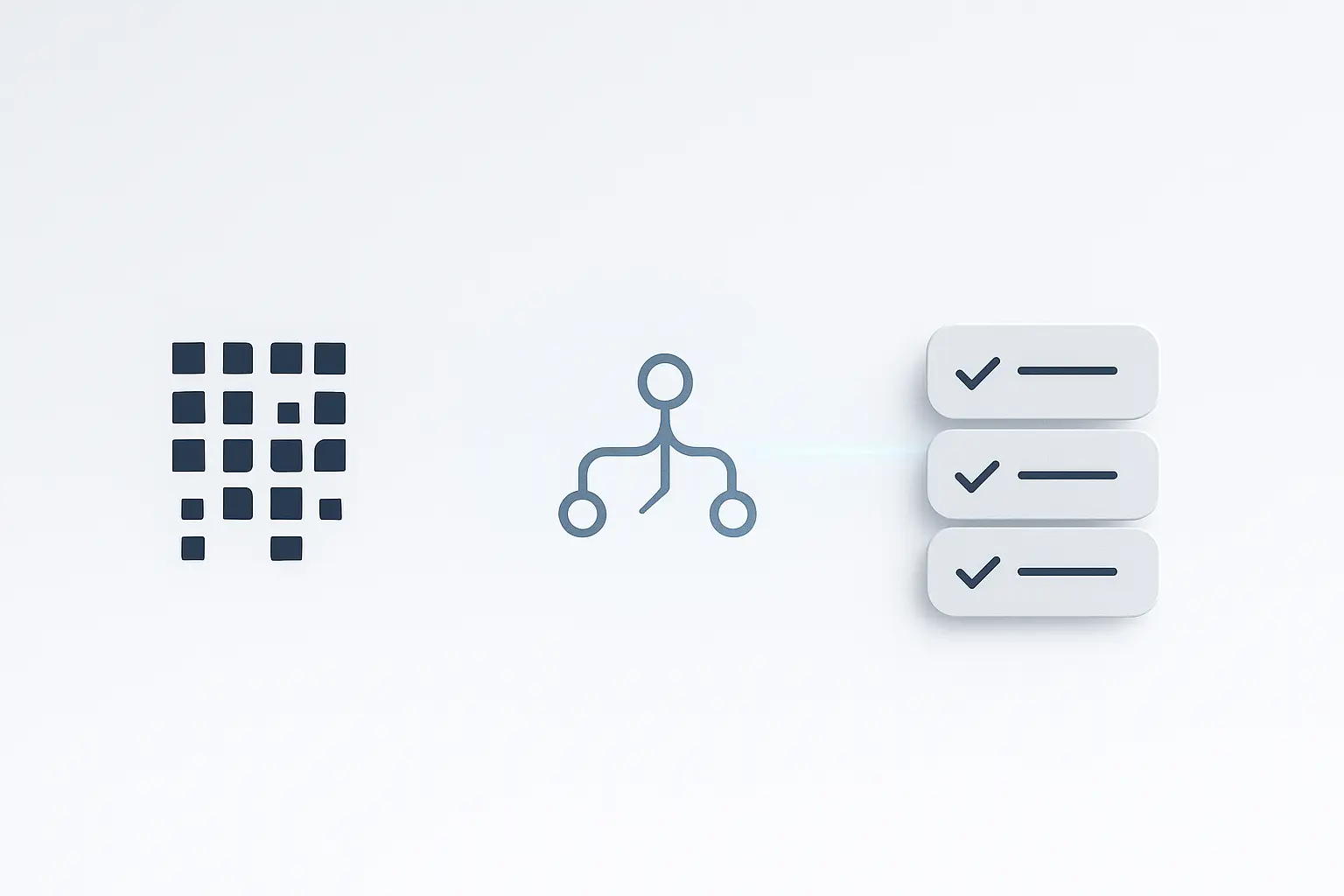Picture this: It’s the first week of the month. You have five client technical audits to complete. Your senior SEO specialist sighs, cracks their knuckles, and prepares to spend the next 20 hours staring at a Screaming Frog export, manually cross-referencing spreadsheets, and copy-pasting findings into project management tickets. It’s tedious, prone to error, and a colossal drain on your most valuable resource: strategic expertise.
What if that entire process—from crawl to categorized tasks—took less than 20 minutes?
This isn’t a futuristic dream; it’s the reality of an automated workflow. While marketing automation boosts sales productivity by 14.5% across many businesses, we often relegate it to email or social media, overlooking its power in technical SEO. This is a massive missed opportunity. By automating technical audits, you don’t just save time; you build a scalable, error-proof engine for growth.
This SOP will walk you through the exact end-to-end workflow to make it happen.
The Problem with Manual Audits
Before we build the new system, let’s be honest about why the old one is broken. Manual technical audits are an agency bottleneck. They rely on heroic individual effort, which isn’t a scalable business model.
The core challenges are:
- Time Sink: Repetitive tasks consume a huge chunk of the workday. Workers estimate they spend around 40% of their week on non-primary job duties like manual data entry. For an SEO, that’s time not spent on strategy, client communication, or competitive analysis.
- Human Error: A misplaced filter in a 100,000-row spreadsheet can mean missing a critical indexing issue. Manual processes are inherently susceptible to mistakes that can undermine client results.
- Inconsistency: Does every team member audit the same way? Do they prioritize the same issues? Without a system, audit quality can vary wildly from person to person, creating an inconsistent client experience.
These issues directly impact an agency’s ability to scale. You can’t double your client load if your core processes require doubling your headcount. Building a system becomes your most significant competitive advantage.
The Automated Audit Workflow: A High-Level View
The goal is to create a seamless flow of data from your SEO crawler to your project management tool, with an automation layer in the middle to do the heavy lifting. This system automatically identifies issues, categorizes them by priority, and creates perfectly detailed tasks for your team to execute.
Here’s a bird’s-eye view of the entire workflow:

This process transforms a multi-day manual slog into a streamlined, automated sequence. Let’s break down each step.
Step 1: The Crawl (The Data Source)
This is the foundation of your audit. Your goal here is consistency. Use a powerful crawler like Screaming Frog, Sitebulb, or Ahrefs Site Audit, and configure a standardized crawl template.
Actionable Steps:
- Create a Crawl Template: Configure your crawler to export only the data points you need. A standard technical audit might include URL, Status Code, Indexability Status, Title Tag, Title Tag Length, Meta Description, Meta Description Length, H1, H2, Canonical URL, and Word Count.
- Schedule the Crawl: Set the crawl to run automatically on a recurring basis (e.g., the 1st of every month).
- Automate the Export: Configure your crawler to automatically save the final CSV or Google Sheet to a designated cloud folder (e.g., a specific Google Drive or Dropbox folder). This becomes the trigger for your entire automation.
Pro-Tip: Use custom extraction to pull specific data points like schema markup type or Google Analytics code presence. This enriches your data from the very beginning.
Step 2: The Automation Layer (The Brains)
This is where the magic happens. A no-code automation platform like Zapier, Make (formerly Integromat), or n8n will act as the central processor. It will watch your cloud folder for a new crawl file, process the data, and send it to your project management tool.
The core logic of this step involves creating “paths” or “routers” based on rules. For example:
- IF Status Code is 404, THEN create a “Fix Broken Page” task.
- IF Title Tag Length is > 65 characters, THEN create a “Shorten Title Tag” task.
- IF Indexability Status is Non-Indexable AND Status Code is 200, THEN create a high-priority “Investigate Indexing Issue” task.
Actionable Steps:
- Set Up the Trigger: Create a new workflow in your automation tool. The trigger is “New File in Folder.” Point it to the cloud folder from Step 1.
- Parse the Data: Use a built-in module to read the CSV or Google Sheet file row by row.
- Build the Logic: Create a series of filters or routers. Each router checks for a specific technical SEO issue. You can build dozens of these for common problems like missing alt text, thin content (low word count), redirect chains, or missing H1 tags.
This is the most crucial step, as it translates raw data into actionable instructions. Investing time here pays dividends across every client account. Building an efficient system like this is fundamental to scaling your services or improving your in-house delivery.
Step 3: Task Creation (The Action)
Once your automation layer identifies an issue, its final job is to create a task in your project management system (e.g., Asana, ClickUp, Jira, Trello).
The key is to create rich, detailed tasks automatically. Don’t just create a task that says “Fix 404.” Create one that says: “Fix 404 Error on /example-page/.”
Actionable Steps:
- Connect Your PM Tool: Authorize your automation platform to connect to your project management account.
- Map the Data: For each logical path, configure the “Create Task” action. Pull data from the spreadsheet to populate the task details.
- Task Name: “[Issue Type] on [URL from crawl]”
- Description: “A recent site crawl identified a [Issue Type]. Please investigate and resolve. Details: Status Code is [Status Code], Title Tag is [Title Tag].”
- Assignee: Assign to the appropriate team member or project lead.
- Due Date: Set a dynamic due date (e.g., 7 days from creation).
- Priority Level: Set priority based on the issue’s severity (e.g., indexability issues are “High,” long title tags are “Low”).
With this final step, your project board will automatically populate with a prioritized list of technical SEO fixes for your team to tackle.
Step 4: Reporting and Monitoring (The Feedback Loop)
The final piece is closing the loop. Your project management tool now contains all the tasks, assignees, and due dates. You can use this data to create powerful, real-time dashboards for both your internal team and your clients.
Actionable Steps:
- Build a Dashboard: Most PM tools have native dashboard capabilities. Create charts that show “Tasks Completed vs. Created,” “Overdue Tasks by Assignee,” and “Open Tasks by Priority.”
- Automate Client Reports: Use your PM tool’s reporting features or connect it to a tool like Looker Studio to create a branded report that shows the technical SEO work completed each month. This provides tangible proof of your ongoing efforts.
This automated reporting turns your behind-the-scenes work into visible client value, reinforcing your role as a proactive partner.

The Real Impact: Beyond Efficiency
Implementing this workflow does more than save a few hours. It fundamentally changes how your agency operates. Adopting AI and automation is no longer just a trend; it’s a strategic necessity, especially since businesses that fully adopt AI have seen revenue improve by as much as 59%.
Here’s the true impact:
- Scalability: You can now onboard five new clients without worrying about your technical audit capacity. The system handles the increased volume effortlessly.
- Proactive Strategy: With analysis automated, your best minds are free to focus on strategy. They can spend their time analyzing competitor backlink profiles or planning content strategy instead of wrestling with spreadsheets.
- Enhanced Profitability: Efficiency directly translates to profitability. When you reduce the time spent on repetitive tasks, you improve margins on every client account. That calculation—time saved versus implementation cost—is often what drives the decision to build in-house or to partner with an outsourcing specialist.
- Improved Client Retention: Clients love seeing a well-oiled machine. Automated reports and consistent progress demonstrate value and build trust, leading to longer, healthier client relationships.
Frequently Asked Questions (FAQ)
What tools are essential for this workflow?
At a minimum, you need a site crawler (Screaming Frog, Sitebulb), a cloud storage solution (Google Drive, Dropbox), an automation platform (Zapier, Make), and a project management tool (Asana, ClickUp, Jira).
How much coding knowledge is required?
Zero. The entire workflow can be built using “no-code” platforms that have user-friendly, drag-and-drop interfaces. If you can build a spreadsheet formula, you can build this.
Is this worth it for small websites?
Absolutely. The initial setup takes a few hours, but it pays dividends for years. Even for a small site, automating the monthly health check frees you up to focus on higher-impact activities. For agencies, building this once means you can deploy it across every client, big or small.
Can I use different tools than the ones you mentioned?
Yes. The principles are universal. As long as your crawler can export a CSV and your PM tool can connect to an automation platform, you can adapt this workflow to your existing tech stack.
Your Path to a Scalable SEO Operation
Manual, repetitive work is the enemy of growth. It burns out your best people and puts a hard ceiling on how many clients you can effectively serve. By automating foundational processes like technical site audits, you are not just optimizing a task; you are building a new operational model.
This system turns your agency from a collection of individual efforts into a scalable, predictable, and profitable engine. It ensures a high standard of quality for every client and frees your team to deliver the strategic insights that clients truly value.
Start small. Automate one check, like finding 404 errors. Once you see it working, add another for title tags. Bit by bit, you can build an automated system that transforms your service delivery and positions you for sustainable growth. And if you need help, consider partnering with a specialist in agency automation and enablement.


